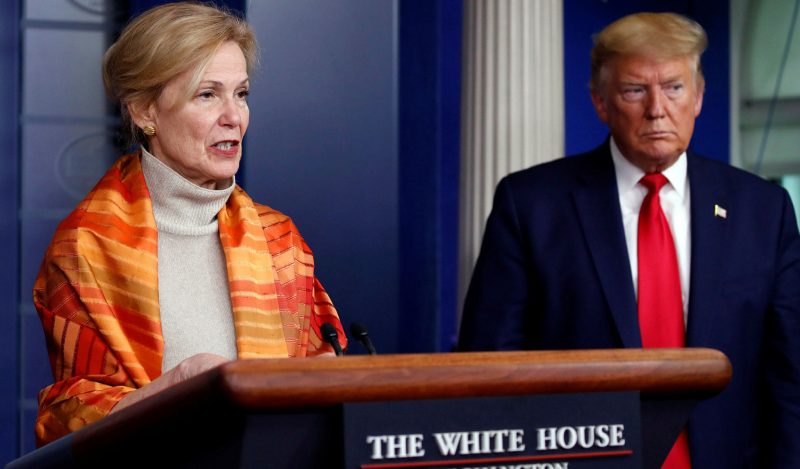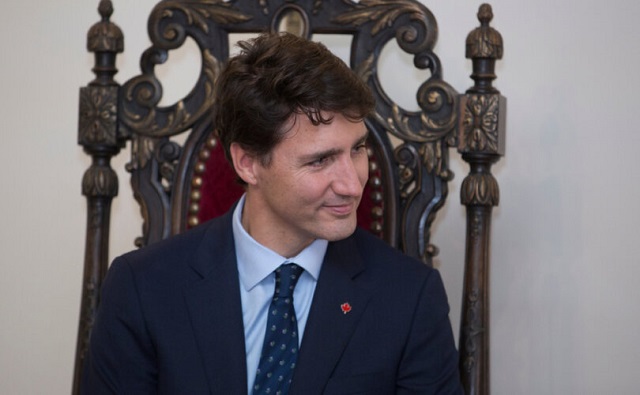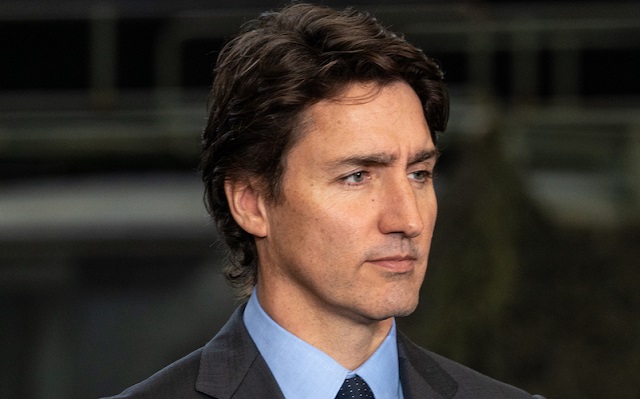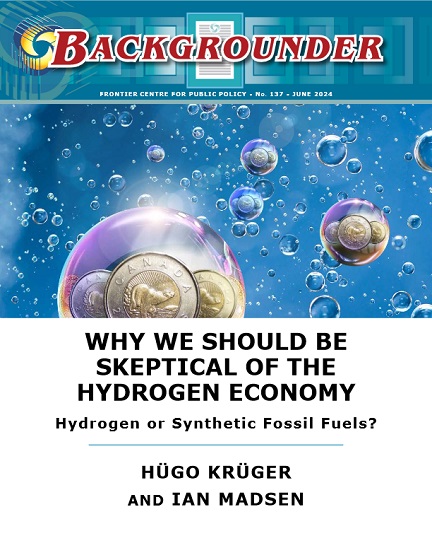Brownstone Institute
The Tragedy of the Brooklyn Literary Scene

From the Brownstone Institute
BY
I recently came home from a visit to Hipster Brooklyn.
I had found that Brooklyn — alongside literary Manhattan — was oddly frozen in an amber of denial and silence.
First, there is that restored state of freedom, that no one will discuss.
I’d wandered the cute little boîtes and trendy underground hand-pulled-noodle postmodern food courts, with mixed emotions.
There were the chic young moms with babies in strollers, both of them breathing freely in the chill just-before-Spring air. There were slouching Millennials, with every demographic likelihood of having been mask-y and COVID-culty, now enjoying their freedom to assemble at will, to flirt and to window-shop, to stroll and to chat and to try on new sweaters in person at Uniqlo.
Many of these folks, no doubt, would have been repelled from 2020 to the present, by people like my brothers and sisters in arms, and by me; as we struggled in the trenches of the liberty movement.
Some of them may have called us anti-vaxxers, extremists, insurrectionists; selfish, “Trumpers,” or whatever other nonsense was the epithet of the day.
Some of them may have wanted to lock down harder, and lock us down harder.
My brothers and sisters in the freedom movement, though we lost employment, savings, status, and affiliations, fought every day — for these very folks; we fought for everyone; we fought so that some day, these young moms could indeed stroll with their babies, breathing fresh air; so that these slouching Millennials could one day indeed wander at will, not “locked down” still, not “mandated” any longer, and not living in fear of an internment camp.
It was bittersweet, seeing this demographic so chill, so relaxed, so back to “normal” — many of whom had been once so oblivious of, or so actively disrespectful of, the sacrifices we on the outside of society had waged for their very freedom.
Who knows where they would be now, if it were not for our combat on their behalf?
Still without their rights regained, like Canada? Still “mandated,” like Canada? Still scared to speak, scared of having bank accounts frozen, scared of losing licenses, scared of being beaten in protests, forbidden to travel without dangerous injections — like Canada?
We are not entirely free again in the US, but we regained many of our freedoms. Not because the evildoers wanted to give them back; but because my brothers and sisters fought hard, strategically, bitterly and furiously, for all of this liberty that I witnessed in front of me, on that almost-spring day on the crowded, tumultuous Fulton Avenue.
It was bittersweet to know that these people would never witness us, or acknowledge what we did for them and their children; let alone thank us; let alone apologize to people like me for the years in which they were just fine with folks such as us banished to the outer edges of society, to eat in the cold streets of New York like animals, or made jobless, or ostracized.
In addition to the dissonance of seeing people who had been perfectly okay with discriminating against the very people who had fought to return to them the liberties they now enjoyed, I suffered a sense of disorientation at realizing that there was a giant cognitive hole in the middle of contemporary culture.
The staffers at the Brooklyn branch of McNally Jackson Bookstore, an independent bookstore which had for years been a stalwart outpost of free-thinking publishing, were still masked, against all reason. I walked in with some trepidation.
Peacefully, faces covered, three years on, they stacked books on the shelves.
I was astonished, as I wandered the well-stocked aisles. Independent bookstores usually reflect the burning issues in a culture at that given time.
But — now — nothing.
It takes about two years to write a book, and about six months to publish one. It was surely time for the new important books from public intellectuals, about the world-historical years through which we had just lived, to appear.
But — no.
In the center of an altar to literate culture, it was as if the years 2020-2023 simply did not exist and had never existed.
This can’t be possible, I thought. This all — the “pandemic,”
lockdowns, denial of education for children, forced masking, forced vaccinations, “mandates” — a crashed economy — globally — this all, as an aggregate, was of course the most important thing ever to have happened to us as a generation of intellectuals.
I kept on searching the stacks. Nothing.
I checked the Top Ten Nonfiction Books in Time.
None had to do with the pandemic policies or the “lockdowns” or the mandated mRNA injections into billions of humans.
I surveyed the lanes lined with books, perplexed and saddened.
Surely the wonderful novelists of my generation, astute observers of the contemporary scene — Jennifer Egan, Rebecca Miller — would have written their Great American Novels about the mania that swept over the globe from 2020-2023 — one which provided once-in-a-century fodder for fiction writers?
No — or at least, not yet.
Surely Malcolm Gladwell, author of The Tipping Point: How Little Things Can Make a Big Difference, the distinguished nonfiction observer of group dynamics, would have tracked how a psychotic delusion intoxicated nations?
No, nothing.
Wouldn’t Samantha Power, author of A Problem from Hell: America in the Age of Genocide have exposed the pandemic policies that sent millions of children into starvation unto death?
Nothing.
Of course Michael Eric Dyson, brilliant and brave commentator on race in America, author most recently of Tears We Cannot Stop: A Sermon to White America, would have written an excoriating expose of how pandemic policies in the US drove brown and black children into even greater learning deficits, and drained millions from small business owners of color?
No, nothing at all.
How about Susan Faludi, respected feminist author of Backlash: The Undeclared War Against American Women? She would have addressed how decades of women’s professional advancement were overturned by “lockdown” policies that drove women out of the workforce because someone had to watch the kids stranded at home?
No.
Undoubtedly Robert Reich, longtime champion of working people, author of The System: Who Rigged It, How We Fix It would have analyzed the greatest wealth transfer in modern history?
Nothing there.
Certainly Michael Moore, author of Downsize This! Random Threats from an Unarmed American, who for decades amplified the voices of working men and women left behind in rustbelt America, would have likewise assailed the flow of wealth in the “pandemic” era from the locked-down, “distanced,” forbidden-to-work working class, to tech CEOs and Pharma shills and their oligarch friends?
Nothing to see.
I could go on and on.
From some of the other important public intellectuals whom I know or whom I have followed for decades — and I do not mean to shame anyone needlessly, so I won’t name them — there were indeed some new books.
There were books on walks through the city.
There were books on “difficult conversations.”
There were books on growing up with unusual parents.
There were books on how meaningful animals are, and how wondrous is their world.
Public intellectuals produced a lot of new books on eating more vegetables.
The bizarre thing about this moment in culture is that the really important journalism, and the really important nonfiction books about the history, the racial and gender injustice, the economics, the public policy, of the “pandemic” years — are being written by — non-writers; by people who are trained as doctors, medical researchers, lawyers, politicians, and activists.
And their books are not displayed or even stocked in bookstores such as McNally Jackson.
So there is a massive hole in the central thought process of our culture.
The courageous non-writers have stepped in to tell the truth, because the famous writers, for the most part, can’t.
Or won’t. Or, for whatever reason, didn’t.
This is because the public intellectuals are by necessity, for the most part, AWOL to the truth-telling demands of this time.
You cannot be a public intellectual whose work is alive, if you have participated in manufacturing, or even accepting quietly, state-run lies.
The work of the cultural elite of every tyranny, from Nazi Germany to Stalin’s Russia, reveals this fact.
Participation in lies by the artist makes the creation of a vibrant cultural text impossible.
Nazi art is bad art. Socialist-realist Soviet fiction is bad fiction.
Journalism in a tyranny; that is, written by state-approved scribes, is always going to be a mess of cliches and obsequiousness that no one wants to read, and that cannot stand the test of time. It vanishes like snow into the cauldron of the future — even as works by the hated, forbidden dissidents who can and do tell the truth — the Solzhenitzyns of the time, the Anne Franks — are like diamonds, that cannot be crushed or lost to time.
It is only these that survive.
Because lies embraced our whole culture since 2020, and because public intellectuals for the most part did not stand up to the lies at the time, and because many even participated in the lies (hello, Sam Harris); since horrible things happened to those of us who did stand up to the lies — most public intellectuals at this moment cannot address the really important events of the recent past.
And from conversations I had with people in liberal-elite publishing, media, education, and the arts — these public intellectuals are being enabled in their silence or distraction or collusion, by a cultural nexus that wants them silent.
The consensus in media-elite land is that no one wants to talk about these issues at all.
“People just want to move on,” I keep hearing, in my former haunts in Manhattan and Brooklyn.
Don’t talk about it.
So this all leads to a weird situation, culturally, now, indeed.
In the world of alt-media independent exiled dissidents, where I live most of the time, we are having the most riveting, important conversations of our lives. This is because we all know civilization itself, and liberty itself, and maybe even the fate of the human race itself, are at stake every day.
In the polite elite-media circles of Brooklyn and New York, to which I returned briefly to dip a toe in the water, people are — not talking about any of it.
They are not talking about the enslavement of humanity. They are not talking about young adults dropping dead.
They are talking about fermentation. They are talking about pets. They are talking, endlessly, like stalkers who cannot let it go, about how bad Donald Trump is, down to what he has for dinner in Mar-a-Lago.
The New York Times these days has the most boring headlines I have read in my life, and it is for this reason: the truth of our time is toxic to the editors of that newspaper, because they bathed in the money of the lies.
In addition to these cruelly soporific headlines, the New York Times is down to running fully imaginary stories that the editors must believe someone somewhere will accept without howling skepticism: “New Data Links Pandemic’s Origins to Raccoon Dogs at Wuhan Market.”
Then, of course, having committed that journalistic crime, the editors need to run this tragically hilarious sub-headline:
A formerly great newspaper has run its way through through bats and civet cats, burning its credibility wholesale in a gigantic bonfire of flat-out state-mouthpiece deception and uncorrected assertions for 3 full years, and is now digging up the specter of raccoon dogs. It is explaining their mating habits to its readers — stop the presses! — even as elsewhere in untouchable-reality-land, Dr Fauci furiously backpedals, trying to avoid charges of crimes against humanity.
A formerly great city of public intellectuals is unable to address current reality and is taking walks.
It is as if New York City and all its thought leaders are enchanted, ensorcelled, staring at one another, mouths open, unspeaking, inside of a conceptual snow globe, while all the rest of us ostracized dissidents are carrying on around this frozen spectacle, fighting a hand-to-hand-combat revolution.
I sighed, as I left the bookstore, and made my way through the freely moving hipster crowds.
We don’t fight for freedom so that we can get credit.
We don’t fight for truth because we want a byline.
We do both just because we can’t help it.
We do both because our Founders fought to the death so that we ourselves would be free one day.
And we fight so that little children whom we will never live to see, will grow up free.
But it is painful to witness the beating heart of what had been a great culture, stunned and muted in denial, and unable to function intellectually.
I guess we just need to leave the sadly rotting carcass of the establishment culture of lies and denial behind.
I say that with sorrow. I will miss the bookstores, universities, newspapers that I once revered.
I guess we have to follow the voices of the truth-tellers of the moment, to other, surprising, beleaguered campfires.
I guess we need to pitch our tents in new fields, outside the walls of the crumbling, breached, and decadent city.
I guess we need to learn new songs and tell new stories, as we find ourselves alongside other — surprising — fierce, and unbowed, and determined, new comrades in arms.
Reprinted from the author’s Substack
Brownstone Institute
How Did a Small Group Do This?

From the Brownstone Institute
“You know, it’s kind of our own science experiment that we’re doing in real time.”
A very interesting study appeared last week by two researchers looking into the pandemic policy response around the world. They are Drs. Eran Bendavid and Chirag Patel of Stanford and Harvard, respectively. Their ambition was straightforward. They wanted to examine the effects of government policy on the virus.
In this ambition, after all, researchers have access to an unprecedented amount of information. We have global data on strategies and stringencies. We have global data on infections and mortality. We can look at it all according to the timeline. We have precise dating of stay-at-home orders, business closures, meeting bans, masking, and every other physical intervention you can imagine.
The researchers merely wanted to track what worked and what did not, as a way of informing future responses to viral outbreaks so that public health can learn lessons and do better next time. They presumed from the outset they would discover that at least some mitigation tactics achieved the aim.
It is hardly the first such study. I’ve seen dozens of such efforts, and there are probably hundreds or thousands of these. The data is like catnip to anyone in this field who is empirically minded. So far, not even one empirical examination has shown any effect of anything but that seems like a hard conclusion to swallow. So these two decided to take a look for themselves.
They even went to the next step. They assembled and reassembled all existing data in every conceivable way, running fully 100,000 possible combinations of tests that all future researchers could run. They found some correlations in some policies but the problem is that every time they found one, they found another instance in which the reverse seemed to be true.
You cannot infer causation if the effects are not stable.
After vast data manipulation and looking at every conceivable policy and outcome, the researchers reluctantly come to an incredible conclusion. They conclude that nothing that governments did had any effect. There was only cost, no benefit. Everywhere in the world.
Please just let that sink in.
The policy response destroyed countless millions of small businesses, ruined a generation in learning losses, spread ill health with substance abuse, wrecked churches that could not hold holiday services, decimated arts and cultural institutions, broke trade, unleashed inflation that is nowhere near done with us yet, provoked new forms of online censorship, built government power in a way without precedent, led to new levels of surveillance, spread vaccine injury and death, and otherwise shattered liberties and laws the world over, not to mention leading to frightening levels of political instability.
And for what?
Apparently, it was all for nought.
Nor has there been any sort of serious reckoning. The European Commission elections are perhaps a start, and heavily influenced by public opposition to Covid controls, in addition to other policies that are robbing nations of their histories and identities. The major media can call the victors “far right” all they want but this is really about common people simply wanting their lives back.
It’s interesting to speculate about precisely how many people were involved in setting the world on fire. We know the paradigm was tried first in Wuhan, then blessed by the World Health Organization. As regards the rest of the world, we know some names, and there were many cohorts in public health and gain-of-function research.
Let’s say there are 300 of them, plus many national security and intelligence officials plus their sister agencies around the world. Let’s just add a zero plus multiply that by the large countries, presuming that so many others were copycats.
What are we talking about here? Maybe 3,000 to 5,000 people total in a decision-making capacity? That might be far too high. Regardless, compared with the sheer number of people around the world affected, we are talking about a tiny number, a mico-percent of the world’s population or less making new rules for the whole of humanity.
The experiment was without precedent on this scale. Even Deborah Birx admitted it. “You know, it’s kind of our own science experiment that we’re doing in real time.” The experiment was on whole societies.
How in the world did this come to be? There are explanations that rely on mass psychology, the influence of pharma, the role of the intelligence services, and other theories of cabals and conspiracies. Even with every explanation, the whole thing seems wildly implausible. Surely it would have been impossible without global communications and media, which amplified the entire agenda in every respect.
Because of this, kids could not go to school. People in public parks had to stay within circles. Businesses could not open at full capacity. We developed insane rituals like masking when walking and unmasking when sitting. Oceans of sanitizer would be dumped on all people and things. People were made to be afraid of leaving their homes and clicked buttons to make groceries arrive on their doorsteps.
It was a global science experiment without any foundation in evidence. And the experience utterly transformed our legal systems and lives, introducing uncertainties and anxieties as never before and unleashing a level of crime in major cities that provoked residential, business, and capital flight.
This is a scandal for the ages. And yet hardly anyone in major media seems to be interested in getting to the bottom of it. That’s because, for bizarre reasons, looking too carefully at the culprits and policies here is regarded as being for Trump. And the hate and fear of Trump is so beyond reason at this point that whole institutions have decided to sit back and watch the world burn rather than be curious about what provoked this in the first place.
Instead of an honest accounting of the global upheaval, we are getting the truth in dribs and drabs. Anthony Fauci continues to testify for Congressional hearings and this extremely clever man threw his longtime collaborator under the bus, acting like David Morens was a rogue employee. That action seemed to provoke ex-CDC director Robert Redfield to go public, saying that it was a lab leak from a US-funded lab doing “dual purpose” research into vaccines and viruses, and strongly suggesting that Fauci himself was involved in the cover-up.
Among this group, we are quickly approaching the point of “Every man for himself.” It is fascinating to watch, for those of us who are deeply interested in this question. But for the mainstream media, none of this gets any coverage at all. They act like we should just accept what happened and not think anything about it.
This great game of pretend is not sustainable. To be sure, maybe the world is more broken than we know but something about cosmic justice suggests that when a global policy this egregious, this damaging, this preposterously wrongheaded, does all harm and no good, there are going to be consequences.
Not immediately but eventually.
When will the whole truth emerge? It could be decades from now but we already know this much for sure. Nothing we were promised about the great mitigation efforts by governments turned out to achieve anything remotely what they promised. And yet even now, the World Health Organization continues to uphold such interventions as the only way forward.
Meanwhile, the paradigm of bad science backed by force pervades nearly everything these days, from climate change to medical services to information controls.
When will evidence matter again?
Published under a Creative Commons Attribution 4.0 International License
For reprints, please set the canonical link back to the original Brownstone Institute Article and Author.
Agriculture
The Enemies of Food Freedom

From the Brownstone Institute
By
In every war, there is necessarily an enemy force, and the war on our food supply is no exception.
My previous article addressed the ongoing attacks on farmers across the globe. In today’s article, we will look at some of the culprits behind this agenda. For anyone who delved into the entities behind the tyrannical Covid policies, many names on the list below will seem quite familiar.
Bayer/Monsanto
Bayer merged with Monsanto in 2018, combining the companies responsible for Agent Orange and pioneering chemical warfare. In 1999, Monsanto’s CEO Robert Shapiro bragged that the company planned to control “three of the largest industries in the world—agriculture, food, and health—that now operate as separate businesses. But there are a set of changes that will lead to their integration.” Today these chemical manufacturers control a huge percentage of the world’s food supply.
Cargill and the US Department of Agriculture (USDA)
Cargill is a World Economic Forum partner and the largest private company in the United States. This behemoth monopolizes unimaginably vast swaths of the global food industry, including meat processing in the United States. Cargill’s business practices, along with bigger-is-better policies enforced by their cronies at the United States Department of Agriculture, have led to the closures of many local abattoirs which forced farmers to depend on a few corporate mega-slaughterhouses. This leaves farmers waiting 14 months or longer for butchering slots, for which they often must transport their animals hundreds of miles—indeed, farmers and ranchers must book processing dates up to a year before the animal is even born. The high fees charged by Cargill’s slaughterhouses contribute to the skyrocketing price of meat—all while the farmers themselves are barely paid enough to cover the cost of raising the livestock. The USDA, meanwhile, makes sure their policies prevent farmers from processing meat themselves on their own farms.
Wellcome Trust
The Wellcome Trust, the former owner of Glaxo before it merged with SmithKline, played a major role in Britain’s Covid debacle and is unapologetic about its goal of reducing your food sovereignty. Wellcome Trust funds Livestock, Environment and People (LEAP), an organization dedicated to developing and testing behavioral modifications to coerce the public into removing meat and dairy from their diets. LEAP’s co-director Susan Jeffs bemoans that motivating people with environmental impact labels on their foods does not seem to work: “People are already settled into very established habits” and suggests instead altering what the industry provides, thereby forcing consumer choice. Wellcome Trust researchers recommend “availability interventions” that “rely less on individual agency” to reduce access to animal food products. Researcher Rachel Pechey opines that “meat taxes show a promising evidence for effectiveness but have been less acceptable in survey work…we don’t want to just go for the most acceptable [solutions].”
The World Health Organization
Dr. Tedros Adhanom Ghebreyesus, the WHO’s Director-General, would like you to believe that food production is responsible for almost one-third of the global burden of disease. He calls for transforming the global food system toward plant-based foods, reducing meat and dairy in our intake, and enforcing policies to save the climate through restricting diet. A WHO 2022 report concluded that “considerable evidence supports shifting populations towards healthful plant-based diets that reduce or eliminate intake of animal products.”
World Economic Forum
You are likely familiar with the World Economic Forum and their Great Reset agenda. Visit their webpage and treat yourself to such morsels as 5 reasons why eating insects could reduce climate change, why we need to give insects the role they deserve in our food systems, and why we might be eating insects soon. Suffice it to say that their plans for your dietary future are clear.
EAT Forum, the Lancet, and their Big Tech and Big Chemical Partners
The EAT Forum is “dedicated to transforming our global food system through sound science, impatient disruption and novel partnerships.” It was co-founded by the aforementioned Wellcome Trust, the Strawberry Foundation, and the Stockholm Resilience Centre. Their FRESH initiative—Food Reform for Sustainability and Health—aims to transform the global food system. Partners in the FRESH initiative include Google, Cargill, Syngenta, Unilever, Pepsico, and many chemical processors such as BASF, Bayer, and DuPont—a rather odd cast of characters for developing a healthy and sustainable dietary plan. EAT’s Shifting Urban Diets Initiative advocates for cities to adopt the Lancet-endorsed Planetary Health Diet, in which plant-based proteins are set to replace meat and dairy. Red meat is limited to 30 calories per day. A report drafted by EAT found that the transformation they want to foist upon our diets is “unlikely to be successful if left up to the individual,” and “require(s) reframing at the systemic level with hard policy interventions that include laws, fiscal measures, subsidies and penalties, trade reconfiguration and other economic and structural measures.”
The Rockefeller Foundation
Members of the Rockefeller family may carry more blame than anyone else in history for turning agriculture away from independent family farms towards corporate conglomerates.
In 1947, Nelson Rockefeller founded the International Basic Economy Corporation to modernize and corporatize agriculture in South America, particularly in Brazil and Venezuela. IBEC transformed farming to depend on expensive machinery and inputs that priced subsistence peasant farmers out of viability. The American International Association for Economic and Social Development (AIA), a Rockefeller-funded philanthropic organization, helped build the market through which IBEC could enrich its owners. While IBEC’s promotional literature claimed that the company was generously assisting the Third World by providing necessary consumer products while turning a profit, on closer examination, it was simply a business enterprise built on the Rockefellers’ old Standard Oil model, in which smaller competitors are forced out using monopolistic practices before prices are raised.
This tactic was taken to a whole new level with the so-called Green Revolution, first in Mexico in the 1940s, then in the Philippines and India in the 1960s, as well as in the United States. Traditional farming practices such as the use of manure as fertilizer for heirloom native crops were replaced with a model of mechanized chemical farming, using Rockefeller-funded new seed varieties which had been developed to require petrochemical fertilizers and pesticides to produce significantly increased crop yields compared to the traditional crops grown by peasant farmers in these countries.
It is worth noting that the Rockefellers, as oil oligarchs, stood to profit handsomely from the petroleum-based fertilizers and pesticides that this new method demanded. The crops grown were almost all cereal crops like rice and replaced more nutrient-dense, traditional crops like millet. India experienced an increase in food but a decrease in nutrition: with more empty calories but fewer fruits, vegetables, and animal proteins, micronutrients disappeared from the diet. Anemia, blindness, fertility problems, low birth weight, and immune impairment increased.
While the Green Revolution was hailed as the solution to world hunger and poverty, it also poisoned local water supplies, depleted the soil, and left farmers drowning in debt as they could no longer independently produce the fertilizer and seeds they needed. Informed readers can see how the later Monsanto GMO Roundup-Ready seed model followed this playbook established by the Rockefellers.
In 2006, the Rockefeller Foundation, Bill Gates, and others pushed the Alliance for a Green Revolution in Africa, or AGRA, and they again followed this proven playbook. Since AGRA’s launch, African biodiversity has been lost, and the number of severely undernourished people in sub-Saharan Africa has increased by nearly 50 percent, even by the UN’s own reports. Just as in India, farmers are being tricked into abandoning nutrient-dense, drought-resistant crops like heirloom millet in exchange for the empty calories of GMO corn. Hundreds of African organizations have demanded that this neocolonial project end, leaving the future of African agriculture in the hands of the native farmers who know the land best.
Now the Rockefeller Foundation has set its sights on the US food system with its Reset the Table agenda, handily launched in 2020 just weeks after the Great Reset was announced. Under rosy language calling for inclusivity and equity, the report states that “success will require numerous changes to policies, practices, and norms.” This includes a major focus on data collection and objectives that align closely with the One Health Agenda—more on that in a future article.
Bill Gates and the Gates Foundation
Bill Gates has followed the Rockefeller playbook for fumigating his fortune and transforming his image—while building more wealth—through the cynical ploy of philanthrocapitalism.
His fingers are deep in every public health pie, and his influence is nearly equal in the food wars. Besides financing the development of fake meats, he is behind the aforementioned AGRA program, is investing in geoengineering programs to dim the sun, and as of January 2021, owned 242,000 acres of prime US farmland, making him the largest private owner of farmland in the US. It is disconcerting to think that a man who believes we should phase out real meat controls so much of the method of production.
USAID and BIFAD
Another organization pushing you to eat bugs is USAID. This may surprise some of you who think of USAID as an organization dedicated to helping third-world countries, rather than as a longtime Trojan horse for CIA operations. (Skeptical of that claim? Go down the rabbit hole here and here and here and here.) Their Board for International Food and Agricultural Development, known as BIFAD, released a report titled “Systemic Solutions for Climate Change Adaptation and Mitigation.” This report calls for a complete transformation of the food supply and global agriculture. They propose to do this through ESG scores, carbon tracking, and eating insects.
So how do these organizations manage to push their agenda on the global population? We will cover that in a future article.












